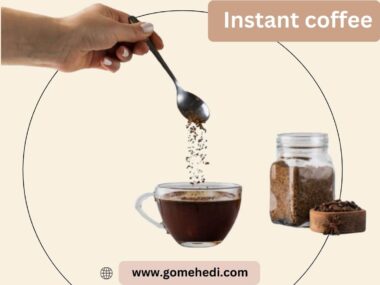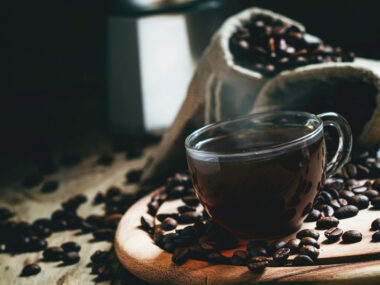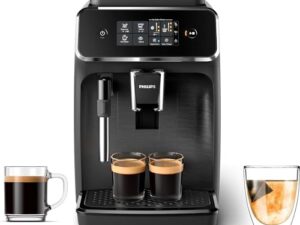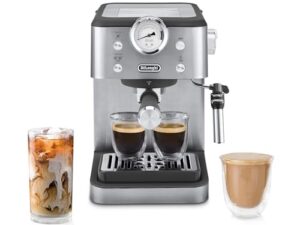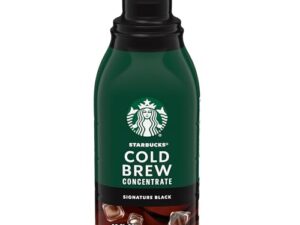Picture this: It’s a sweltering summer day, and you’re craving a refreshing pick-me-up. You decide to reach for that popular, smooth, and delicious drink—cold brew coffee.
But, have you ever wondered how much caffeine is actually in your beloved cold brew? Understanding the caffeine content can help you make informed choices about your energy boost and daily consumption. We’ll dive into the world of cold brew coffee and uncover the secrets behind its caffeine levels.
Whether you’re a seasoned coffee enthusiast or a curious newcomer, you’ll find out everything you need to know to enjoy your cold brew with confidence. Keep reading to discover how this chilled delight can power up your day!

Credit: savorista.com
Cold Brew Basics
Cold brew coffee has gained popularity for its smooth, rich flavor. It’s different from regular iced coffee. The brewing process and taste set it apart. Let’s dive into the basics of this refreshing drink.
What Is Cold Brew Coffee?
Cold brew coffee is made by steeping coffee grounds in cold water. It takes time, usually 12 to 24 hours. This slow process extracts flavors without bitterness. The result? A smooth, naturally sweet coffee.
Brewing Process
The brewing process for cold brew is simple. Start with coarsely ground coffee beans. Add them to a jar or pitcher with cold water. Stir to ensure all grounds are wet. Cover and let it steep for at least 12 hours.
Once steeped, strain the mixture to remove grounds. Use a fine mesh sieve or a coffee filter. The liquid left is your cold brew concentrate. You can dilute it with water or milk to taste.
Store the concentrate in the fridge. It stays fresh for up to two weeks. Enjoy it over ice for a refreshing drink.
Caffeine Content Factors
When you sip on a cold brew coffee, have you ever wondered why it packs such a punch? The caffeine content in cold brew is influenced by several factors, and understanding these can help you tailor your coffee experience to your liking. Whether you’re looking for a mild boost or a powerful jolt, paying attention to the type of bean, brewing time, and coffee-to-water ratio can make all the difference. Let’s dive into these caffeine content factors and see how they affect your favorite chilled drink.
Bean Type
Your choice of coffee bean significantly impacts the caffeine content. Did you know that robusta beans generally contain more caffeine than arabica beans? If you’re after a stronger caffeine kick, consider opting for a blend with robusta. Next time you’re at the coffee shop, take a moment to ask about the bean type used in their cold brew. You might find yourself surprised by the caffeine difference.
Brewing Time
Brewing time plays a crucial role in caffeine extraction. Cold brew typically steeps for 12 to 24 hours, which is much longer than hot coffee. This extended brewing time allows more caffeine to be pulled from the grounds. Have you ever tried a cold brew that felt more potent than usual? Check how long it was brewed. A few extra hours can mean a noticeable increase in caffeine.
Coffee-to-water Ratio
The ratio of coffee grounds to water also determines caffeine concentration. A stronger brew usually means more coffee grounds are used in relation to water. If you enjoy a bold taste, you might opt for a higher coffee-to-water ratio. But remember, this also means more caffeine. Next time you’re preparing cold brew at home, experiment with different ratios and see which suits your taste and energy needs best.
These factors can create a cold brew that’s tailored to your preferences. Which factor do you think has the biggest impact on your cold brew experience? Share your thoughts or try adjusting one aspect to see what changes. Your perfect cup of cold brew might be just a tweak away!
Comparing Cold Brew To Other Coffees
Cold brew coffee is a popular choice for caffeine lovers. It offers a smooth flavor and a refreshing experience. But how does it stack up against other types of coffee? Let’s dive into the caffeine differences between cold brew and other coffee varieties.
Cold Brew Vs. Drip Coffee
Drip coffee is a classic in many homes and cafes. Typically, drip coffee has less caffeine than cold brew. The brewing process affects caffeine levels. Cold brew is steeped for several hours, increasing caffeine content. Drip coffee is brewed quickly with hot water. This method extracts less caffeine. For a stronger caffeine punch, cold brew is your go-to choice.
Cold Brew Vs. Espresso
Espresso is small but mighty. It’s known for its intense flavor and high caffeine. But cold brew can surprise you. A standard cold brew serving has more caffeine than a single espresso shot. Espresso packs a punch in a small cup. Cold brew delivers a steady caffeine boost in a larger glass. For a quick energy shot, choose espresso. For lasting caffeine, cold brew wins.
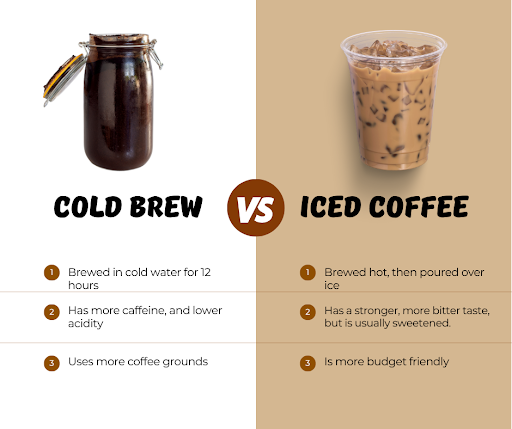
Credit: mortadellahead.com
Health Implications
Cold brew coffee contains more caffeine than regular coffee. This affects heart rate and sleep patterns. Understanding caffeine content helps manage health impacts effectively.
Health Implications Cold brew coffee is a popular choice for coffee enthusiasts, especially during warmer months. But, have you ever wondered about its health implications? Understanding the effects of caffeine in cold brew coffee can help you make informed decisions about your consumption.Benefits Of Caffeine
Caffeine can boost your energy levels. A cold brew can be your perfect morning pick-me-up. It can improve your focus and concentration, making it easier to tackle tasks. Many athletes enjoy cold brew coffee for its potential to enhance physical performance. Studies have shown that caffeine can increase endurance by releasing fatty acids from fat tissues. This might just give you the extra push you need for a workout. Some research suggests that caffeine might reduce the risk of certain diseases. It may lower the chances of developing Parkinson’s disease and some types of cancer. However, it’s essential to consume it in moderation to reap these benefits.Potential Risks
Too much caffeine can lead to several health issues. Consuming high levels of caffeine may cause jitteriness or anxiety. If you’ve ever felt your heart race after a few cups, you know what I mean. Some people experience digestive issues from caffeine. If you’ve ever had an upset stomach after your cold brew, caffeine might be the culprit. It’s wise to pay attention to how your body reacts. Caffeine can also disrupt your sleep. Having a cold brew later in the day might keep you up at night. Consider limiting your intake in the afternoon if you’re sensitive to caffeine. How do you balance the benefits and risks? Understanding your body’s response is key. Do you notice any patterns with your caffeine consumption? Listen to your body and adjust accordingly.Measuring Caffeine Levels
Cold brew coffee often contains more caffeine than regular coffee. It can range from 100 to 200 milligrams per 8-ounce serving. This is due to its longer steeping time, which extracts more caffeine from the coffee grounds.
Measuring the caffeine levels in your favorite cold brew coffee can be an intriguing journey. Ever wondered why some cups leave you bouncing with energy while others hardly keep your eyes open? Understanding the caffeine content in cold brew is not just about curiosity; it’s about making informed choices. Whether you’re seeking that extra morning jolt or trying to cut back, knowing the caffeine content can help you achieve your goals.Methods For Testing
There are several ways to measure caffeine content, ranging from simple to complex. Home testing kits are available for those who like a DIY approach. These kits can offer a rough estimate, but they might not be the most accurate. For more precise results, laboratory testing is the gold standard. Labs use high-performance liquid chromatography (HPLC), a method that separates and quantifies caffeine. This process is both accurate and reliable, though it can be costly and less accessible for everyday use. Have you ever tried a home testing kit? It might be a fun experiment, but remember that professional methods are more reliable if accuracy is key.Average Caffeine Content
The caffeine content in cold brew coffee can vary widely. On average, an 8-ounce cup of cold brew contains between 100 to 200 milligrams of caffeine. This range depends on factors like the coffee-to-water ratio and brewing time. Some coffee shops might offer cold brew with even higher caffeine levels, especially if they use a higher coffee concentration. If you brew your own at home, you have the power to adjust the ratio to suit your caffeine preferences. Consider how much caffeine you really need. Is your goal to stay alert or to enjoy a flavorful experience? Knowing the average caffeine content can help you tailor your brew to your needs. Are you surprised by how much caffeine is in your cold brew? Remember, the choices you make in brewing can significantly impact your energy levels throughout the day.
Credit: dripbeans.com
Cold Brew Trends
Cold brew coffee has taken the world by storm, becoming a staple in cafes and homes alike. As temperatures rise, so does the desire for a refreshing, caffeinated beverage. Cold brew offers a smooth, less acidic taste compared to its hot counterpart, making it a favorite for many.
Popularity Surge
Have you noticed more cafes offering cold brew? This trend isn’t just about taste. It’s about how cold brew fits into your busy lifestyle. You can make a batch and store it for days. This convenience appeals to those of us constantly on the go.
Cold brew has become popular not just for its taste, but also its versatility. You can add flavors, mix it with milk, or drink it straight. The options are endless. But why the surge in popularity?
Part of the reason is the rise of social media. People share their coffee creations, sparking interest and curiosity. Have you ever tried making your own cold brew? It’s easier than you think.
Innovation In Cold Brew
Innovation in cold brew is changing how we enjoy our coffee. New brewing methods are emerging, allowing for faster preparation without sacrificing flavor.
Brands are experimenting with ready-to-drink options. You can grab a bottle of cold brew at your local store. This makes it easier for you to enjoy cold brew without the wait.
Some cafes are even offering nitrogen-infused cold brew. This adds a creamy texture without dairy. Have you tried one of these unique offerings?
With so much innovation, the possibilities are endless. What new cold brew trend will you try next?
As you explore cold brew, consider the caffeine content. It’s typically higher than regular coffee, giving you an extra kick. But remember, moderation is key.
Making Your Own Cold Brew
Cold brew coffee is a refreshing way to enjoy coffee. It’s smooth, bold, and less acidic. Making your own cold brew at home is easy. You control the taste, strength, and caffeine level.
Simple Recipe
Start with coarsely ground coffee beans. Use a ratio of 1 cup coffee to 4 cups water. Mix them in a large jar or pitcher. Stir gently to ensure all grounds are wet.
Cover and let it steep for 12-24 hours. Steeping time affects flavor strength. After steeping, strain the mixture through a coffee filter or fine mesh. Store the cold brew in the fridge for up to two weeks.
Adjusting Caffeine Levels
Caffeine levels depend on coffee-to-water ratio and steeping time. To increase caffeine, use more coffee grounds or steep longer. For less caffeine, use fewer grounds or a shorter steep.
Experiment to find your perfect balance. Remember, cold brew is usually stronger than hot coffee. Dilute with water or milk to adjust strength.
Frequently Asked Questions
Is Cold Brew Coffee Stronger In Caffeine?
Cold brew coffee often has more caffeine than regular coffee due to its longer steeping time. The concentration varies based on the coffee-to-water ratio. Adjusting this ratio can alter caffeine levels, making it stronger or weaker. Always check specific brew methods for accurate caffeine content.
How Much Caffeine Is In 8 Oz Of Cold Brew Coffee?
An 8 oz cup of cold brew coffee typically contains 100 to 200 mg of caffeine. The caffeine content varies based on the brewing method and coffee concentration. Cold brew is known for its smooth flavor and higher caffeine than regular coffee.
Always check specific product labels for exact caffeine content.
How Much Caffeine Is In A 12 Oz Cup Of Cold Brew Coffee?
A 12 oz cup of cold brew coffee typically contains between 150 to 240 mg of caffeine. The exact amount varies based on the brewing method and coffee bean type. Cold brew often has more caffeine than regular coffee due to its longer steeping process.
How Much Caffeine Is In Cold Brew Coffee?
Cold brew coffee contains about 200 mg of caffeine per 16-ounce serving. This amount can vary depending on the coffee-to-water ratio. Cold brew is brewed over a long period, often resulting in a smoother, less acidic taste compared to hot brewed coffee.
Conclusion
Cold brew coffee offers a smooth, rich taste. Its caffeine content varies. Factors like brewing time and coffee-to-water ratio matter. On average, it contains more caffeine than regular coffee. This can give you a strong energy boost. But always check your tolerance levels.
Everyone’s caffeine sensitivity is different. Enjoy your cold brew responsibly. Balance is key for a healthy lifestyle. Understanding your drink helps make informed choices. So, savor your cold brew. Stay energized and refreshed.

